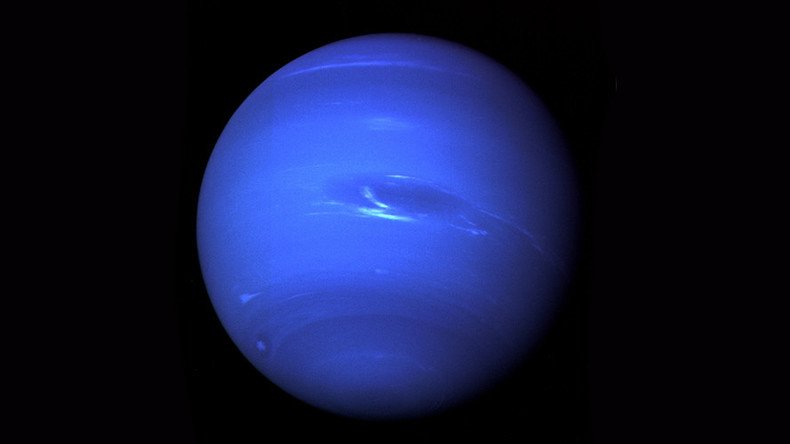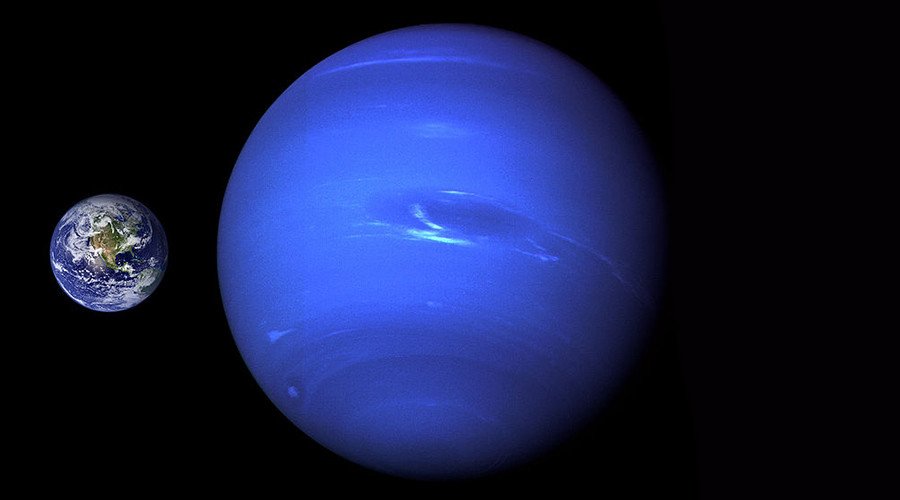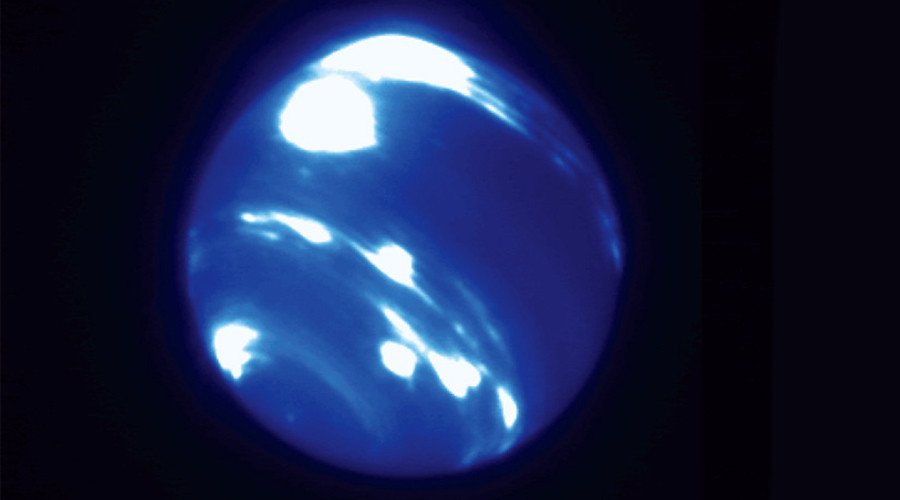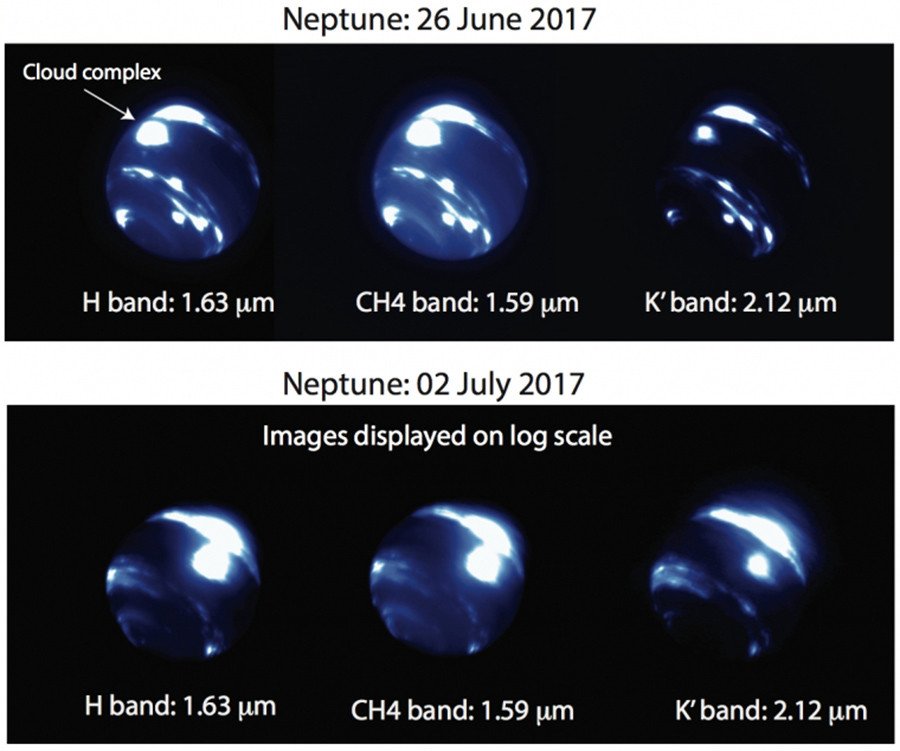Earth-sized vortex on Neptune takes scientists by storm (PHOTOS)

Stunning images of a raging storm almost as large as Earth have baffled astronomers studying the solar system's farthest-flung planet, Neptune.
Though storms have been observed on the large blue planet before, the location and size of this particular phenomenon has puzzled space boffins since the massive bright clouds were first observed at the end on June.
The huge storm, roughly 9,000 km (5,592 miles) in length, is ripping through an area of the planet where no bright clouds have been seen before.
For context, if a similar storm happened here on Earth, it would cover three-quarters of our planet.

“Seeing a storm this bright at such a low latitude is extremely surprising,”said University of California, Berkeley grad student Ned Molter, who first spotted the storm from the W. M. Keck Observatory in Hawaii.
“Normally, this area is really quiet and we only see bright clouds in the mid-latitude bands, so to have such an enormous cloud sitting right at the equator is spectacular.”

Professor Imke de Pater echoed her student’s observations, saying: “Historically, very bright clouds have occasionally been seen on Neptune, but usually at latitudes closer to the poles, around 15 to 60 degrees north or south. Never before has a cloud been seen at, or so close to the equator, nor has one ever been this bright.”
There are two theories regarding the composition of the storm. One suggests that it could be a massive, high pressure, dark vortex system anchored deep in the planet's atmosphere.
“This big vortex is sitting in a region where the air, overall, is subsiding rather than rising,” said de Pater. “Moreover, a long-lasting vortex right at the equator would be hard to explain physically.”
Mysterious ‘unseen planetary mass’ lurking at edge of solar system https://t.co/TLezVRmGf9pic.twitter.com/SljOWuEo0c
— RT (@RT_com) June 23, 2017
Alternatively, it could be a huge convective cloud, like those observed on other planets such as Saturn.
Either way it is a new, or at least newly-observed, phenomenon on Neptune that de Pater thinks indicates the gas giant is undergoing some atmospheric changes.
“This shows that there are extremely drastic changes in the dynamics of Neptune’s atmosphere, and perhaps this is a seasonal weather event that may happen every few decades or so.”

Named after the Roman god of the sea, Neptune was first discovered in 1846.
The planet takes 164.8 Earth years to orbit the sun and its gravitational pull is second only to Jupiter. Not to be outdone by its celestial brother’s Great Red Spot, Neptune also has a huge mysterious storm system known as the Great Dark Spot, which is roughly the size of Earth.












